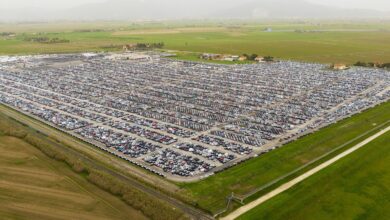All-Electric Is Not the Answer

Lately, there has been a strong movement to switch to all-electric appliances as a means to reduce greenhouse gas emissions. Some communities — including my hometown of East Hampton — are even discussing banning gas stoves and other natural gas equipment. On the surface this sounds like a great idea; surely, appliances that don’t produce emissions are a good step, right?
Wrong. In fact, the push to go all-electric is ill advised and fraught with problems, and ultimately won’t reduce the overall carbon footprint in a home. Why? Because the electricity powering those appliances usually comes from electrical grids that produce electricity from fossil fuels. While the appliances themselves may not produce any “on-site” emissions, the off-site emissions produced by creating the electricity they consume more than outweigh the on-site emissions saved.
Different electrical grids in different locations have different carbon footprints, depending on the source of power used to produce electricity. A grid using fossil fuels or coal will have a much bigger carbon footprint than a grid using primarily hydroelectric or wind power. Therefore, an electrical appliance that uses electricity from a grid that distributes mostly fossil fuel or coal-generated electricity will have a higher carbon footprint than an appliance that uses electricity from a grid that distributes more electricity from renewable sources.
The EPA calculates and lists the energy used to produce electricity in different regions. You can look up any electrical grid on the EPA website and see the carbon emissions per kilowatt hour created on that grid. The Long Island Electric Grid, for example, uses fuel oil and natural gas along with renewable hydroelectric energy imported from Niagara, so it has a lower carbon footprint than electric grids in Kentucky or Tennessee, which generally use more coal, but a higher carbon footprint than the electric grid in Niagara, which uses 100% renewable hydroelectric energy.
Even with the renewable energy the Long Island grid imports, its carbon footprint from burning natural gas, oil, and other fossil fuels consists of carbon dioxide (1,210.9 pounds per megawatt hour), sulfur dioxide (0.264 lbs./MWh.), and nitrogen oxide (0.912 lbs./MWh.). The national average of carbon dioxide emissions alone from the production of electricity is 852.3 lbs./MWh., whereas the Long Island grid is 1,210.9 lbs./MWh., about 60% greater than the national average.
From a climate change perspective, using an electric stove on a fossil fuel grid emits three times more greenhouse gas emissions per British Thermal Unit than using natural gas or propane — as I demonstrated in a peer-reviewed paper that was published in the American Institute of Physics Journal of Renewable and Sustainable Energy. Moreover, the cost per B.T.U. for electricity is three times more than burning natural gas or propane, meaning homeowners will pay three times as much to bake that pie if using an electric oven rather than a gas oven.
The same goes for other electric appliances such as cars. Companies advertise electric vehicles as having no tailpipe emissions — which the average consumer hears as zero emissions overall. But this doesn’t take into account the emissions caused by the manufacturing process or the electricity used to charge the car.
I have done studies on the carbon footprint of an electric vehicle versus the same vehicle powered by gas. I compared a Nissan Leaf and a Nissan Versa: same car, same platform, but one is electric, and one is gas. I looked up the gas mileage of the Versa, and through the EPA I looked up the carbon footprint of burning a gallon of gas. Then, I calculated the carbon footprint of charging the battery of an electric vehicle. If you are charging the vehicle on a fossil fuel grid, you are causing more greenhouse gas emissions than if you drove a gas-powered car.
The automobile industry has been working on gas engine efficiency since the 1970s. Cars now have catalytic converters, which scrub the exhaust, converting carbon monoxide to carbon sulfite, which is not as dangerous. The pollution coming out of gas engine cars today is drastically reduced from what it was in the 1970s. Once all of this was taken into account, the Nissan Versa actually had a smaller carbon footprint than the Nissan Leaf.
Now, if you could charge your electric vehicle on a renewable grid or use solar panels on your house, then the carbon emission reduction of an electric vehicle would surpass a gas-powered vehicle. Likewise, if you live on a 100% renewable grid or use solar panels to provide electricity to your house, then all-electric appliances would indeed create less emissions.
For example, the solar panels on our home produce more electricity than we consume. The excess electricity is sent to the grid in a mechanism called net-metering. Our electric utility tracks the excess electricity sent to the grid in an “Energy Credit Bank” much like a savings account. Since our solar panels began producing electricity in November 2019, we have accumulated 18,833 kWh as of December 8, 2023. At our current retail cost of electricity — $0.23 per kWh — the cost savings from excess electricity produced by our solar panels equals $4,331.59 in addition to the 42,6880 kWh of electricity our home consumed since the solar panels were installed. We have the headroom for an electric vehicle and an EV pickup truck on order, which we plan to use locally. The best part is, operating the EV truck will literally cost us nothing. Operating all electric appliances will cost us nothing.
A move away from carbon-emitting appliances is a positive step, but only if it’s not counteracted by off-site emissions from electric grids. I’m heating my house with a carbon-neutral renewable energy source (Hint: It’s not electric) and there are many more emerging technologies coming to market, such as hydrogen. To produce hydrogen from renewable energy, the only emission is oxygen. When burning hydrogen, the only emission is pure water. The issue of storing hydrogen under high pressure has been resolved with new technology.
Off-site electricity production must be accounted for in any carbon emissions calculations, according to the Greenhouse Gas Protocol developed by the World Resources Institute, which is the accepted worldwide standard. When you follow the science, it’s easy to see: all-electric without renewable electricity won’t solve the climate change crisis.
Or is the source from renewable energy? New York State is already enjoying its first operating turbine at the region’s first offshore wind farm.
Frank Dalene, the bestselling author of Decarbonize the World: A Market-Based Solution to the Climate Crisis, is president and CEO of Telemark Inc., a construction services business he cofounded with his father in 1978. Over the past four decades, Telemark has become known for being a national leader, embracing the latest in energy efficiencies. Dalene is innovating the manner in which companies can assess their carbon footprint. Through his ICEMAN (International Carbon Equivalent Mechanism Attributed to Neutrality) methodology, companies can get an accurate snapshot of their product’s carbon emissions on a standardized scale. Dalene has presented keynotes across the world on sustainable construction, carbon neutrality and ICEMAN. Learn more at frankdalene.com. .
-PARTNER CONTENT

Frank Dalene, the bestselling author of Decarbonize the World: A Market-Based Solution to the Climate Crisis, is president and CEO of Telemark Inc., a construction services business he cofounded with his father in 1978. Over the past four decades, Telemark has become known for being a national leader, embracing the latest in energy efficiencies. Dalene is innovating the manner in which companies can assess their carbon footprint. Through his ICEMAN (International Carbon Equivalent Mechanism Attributed to Neutrality) methodology, companies can get an accurate snapshot of their product’s carbon emissions on a standardized scale. Dalene has presented keynotes across the world on sustainable construction, carbon neutrality and ICEMAN. Learn more at frankdalene.com.
-PARTNER CONTENT



